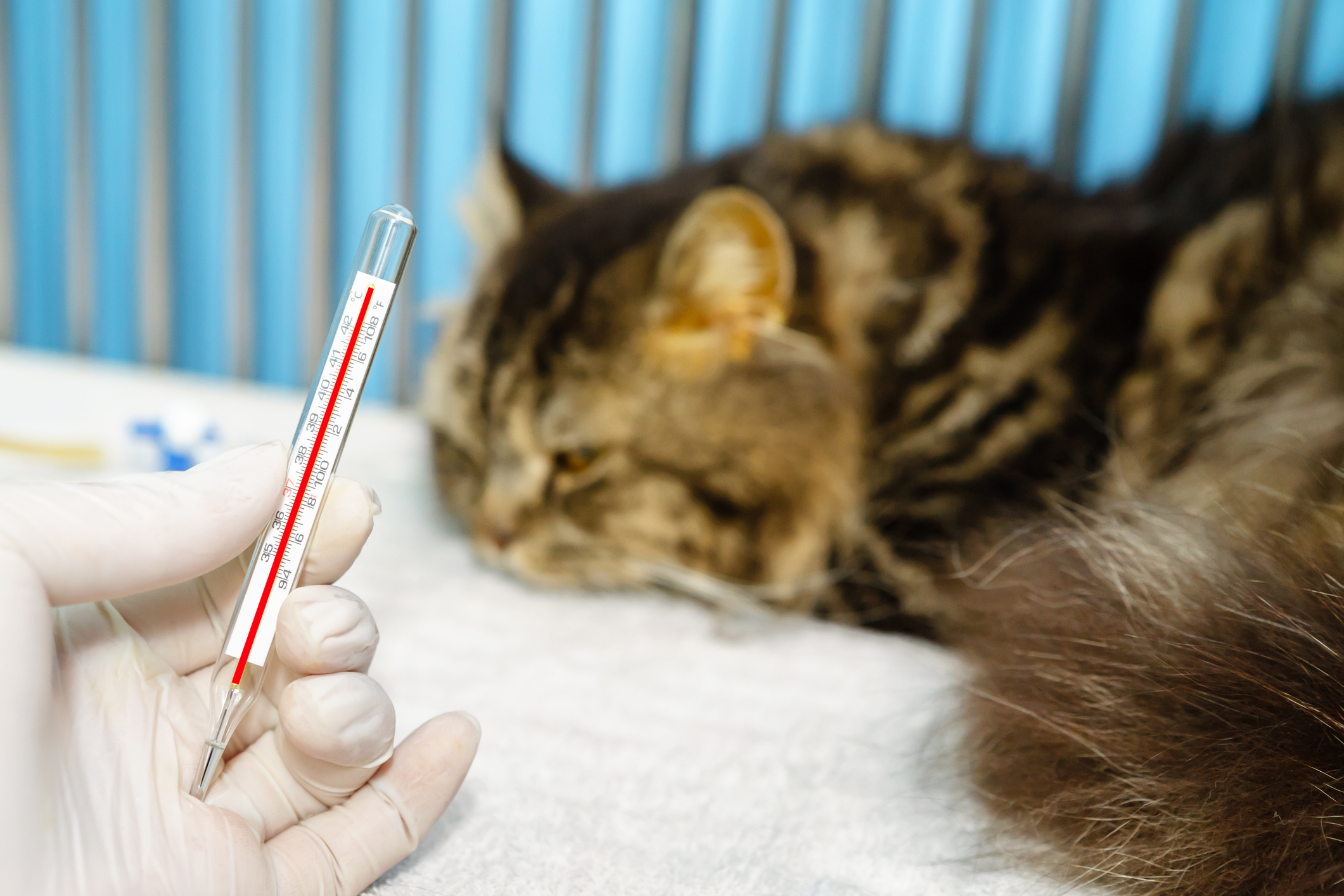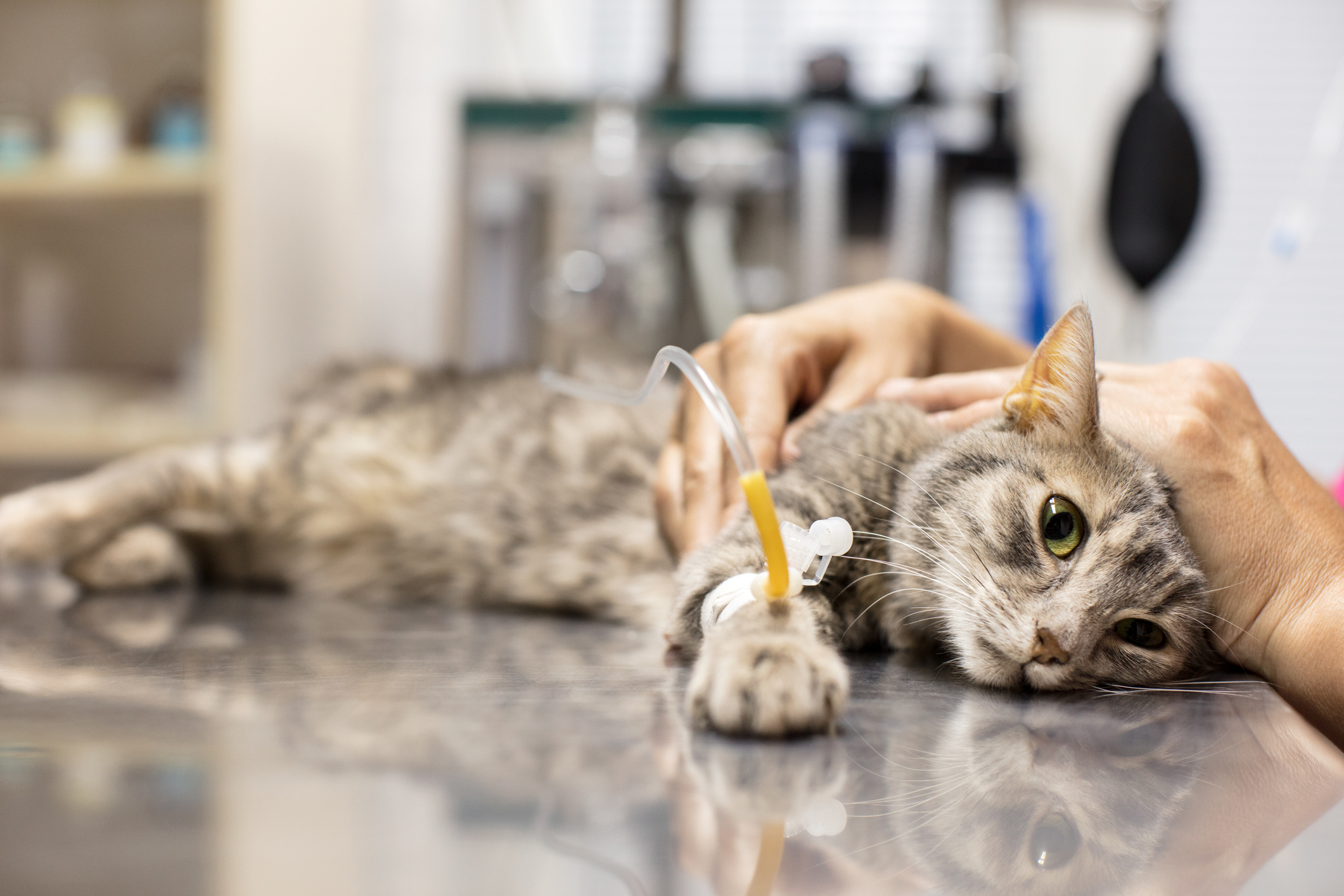
This Feline Disease is Hard to Identify and Even Harder to Treat
When a cat gets sick, most pet owners are able to pick up on the signs and get them in to the vet as soon as possible for an examination. Typically, just a few simple tests can clue vets into the cat’s ailment, and vets can use that information to prescribe a cure or treatment.
Unfortunately, there are some health problems that can evade diagnosis for long periods of time, leaving pet parents without answers. One such ailment is a rare disease called feline infectious peritonitis (FIP). This viral disease causes many symptoms of common health problems but cannot be diagnosed or treated nearly as easily.
Understanding FIP
FIP is a viral infection that transports the feline infectious peritonitis virus throughout the body using the white blood cells of the cat’s immune system. The FIP virus is not transmitted from cat to cat. Rather, it is a mutation of another common virus called feline coronavirus. Many strains of the feline coronavirus do not cause disease, and most cats carry the virus without ever showing symptoms.
Unfortunately, in less than 10 percent of all cats infected with feline coronavirus, the virus either mutates or progresses into the FIP virus due to an abnormal reaction from the immune system. This transition to FIP can happen at any time after the cat is exposed to the coronavirus—even years after. Once this occurs, cats with FIP may begin to show symptoms slowly as the virus takes over.
Because the virus is carried throughout the body by white blood cells, the immune system begins to attack the tissues composed of these infected cells, causing an intense inflammatory response in the nearby blood vessels. Often, these vessels are located in the abdomen, kidneys and brain. Unfortunately, due to the disease’s progression and effects, FIP is almost always fatal.
FIP is most common in cats under the age of two or in cats with weakened or underdeveloped immune systems.
Warning signs
The signs of FIP progress gradually over the course of a few weeks. They typically start off very subtle, which makes it difficult for cat owners to spot. Once symptoms are more noticeable, they typically look like generic symptoms of illness in cats, including a loss of appetite, weight loss, lethargy and a fever.
A persistent fever of unknown origin is one major way vets discover FIP in cats. A fever that doesn’t respond to antibiotics or that isn’t accompanied by organ damage or signs of another type of health problem after blood tests and imaging scans may be related to FIP.
 As FIP progresses, the symptoms usually get more pronounced. There are two forms of FIP, each with its own unique set of symptoms:
As FIP progresses, the symptoms usually get more pronounced. There are two forms of FIP, each with its own unique set of symptoms:
- Wet: Effusive, or “wet,” FIP is identified by the gradual accumulation of straw-colored fluid in the cat’s abdomen or chest. Effusive FIP progresses rapidly, causing sudden changes in your cat’s appearance. Fluid accumulation usually leads to a pot-bellied appearance, followed by difficulty breathing.
- Dry: Non-effusive, or “dry,” FIP does not cause the fluid accumulation that the wet version does. In the dry version, the original symptoms of FIP worsen gradually, leading to chronic weight loss, anemia and a persistent fever. Gradual organ damage can occur due to the presence of inflammatory lesions. Pets with non-effusive FIP typically live longer because of the more gradual progression of symptoms.
Difficulties with FIP
Unfortunately, because the major signs of FIP are similar to those of other common feline illness, it can be difficult to identify. Once the cat is brought in to the vet, reaching a diagnosis is even more difficult because there is no true test for the virus. Vets can test for the presence of feline coronavirus antibodies, but testing does not determine whether the virus has mutated into FIP. New tests have been emerging that are capable of detecting parts of the virus, but, generally, it is very difficult for vets to reach a final diagnosis.
Usually, vets assume a diagnosis of FIP after ruling out a wide range of other health problems, matching symptoms to FIP and/or detecting fluid buildup in the cat’s chest or abdomen.

After a presumptive diagnosis of FIP is reached, the sad reality of the disease is that there is no cure. Many cats succumb to the disease over time due to the damage done to the body. Some cats have survived FIP, but almost all diagnosed cats sadly pass away.
If your cat has been determined to have FIP, the treatment plan advised by your vet will most likely be supportive, meaning providing your cat the most comfortable life possible. Your cat may require corticosteroids to reduce their fever, immune strengthening supplements to help their body fight back against the disease and maintain strength, fluids to avoid dehydration and other supportive care methods.
The difficult diagnosis and treatment of FIP can be very hard on families and their pets. Thankfully, FIP is a relatively uncommon disease. If your cat begins showing the early symptoms synonymous with FIP, it’s more likely that they are experiencing one of the many other ailments that are much more easily identified and treated, but you’ll want to visit the vet to be sure.


